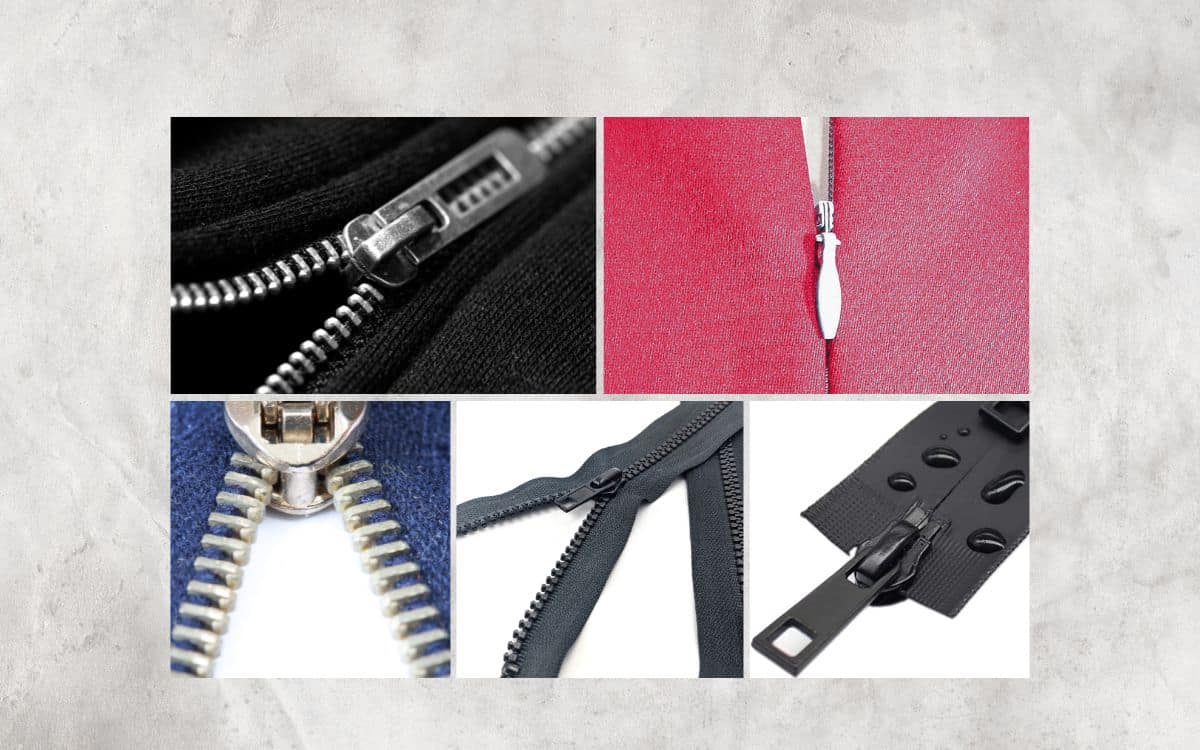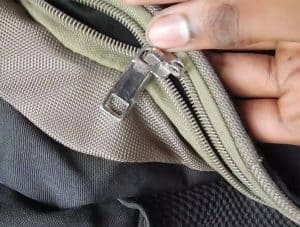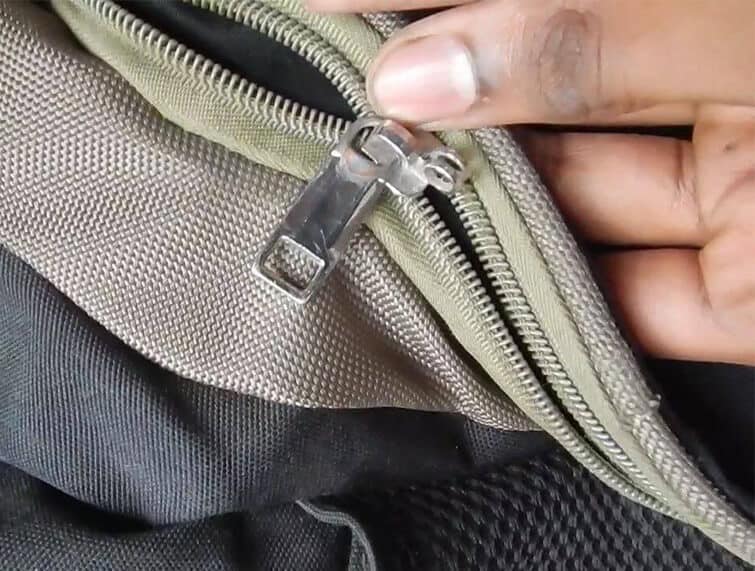Zippers are an essential component of many everyday items, from clothing to luggage, bags, and more. They provide a convenient way to open and close things quickly and securely. However, with so many different types of zippers available, it can be overwhelming to choose the right one for your project. In this article, we’ll take a closer look at the most common types of zippers and their uses to help you make an informed decision.

Coil Zippers
Coil zippers, also known as nylon zippers, are made of a continuous coil that is sewn onto the fabric. The coil is made of nylon, making it flexible and easy to sew. This type of zipper is commonly used in clothing, bags, and outdoor gear.
Common Uses
- Jackets
- Backpacks
- Tents
- Sleeping bags
- Purses
- Jeans
Pros
- Lightweight and flexible
- Available in a range of colors
- Easy to sew onto fabric
- Inexpensive
Cons
- Not as strong as metal zippers
- Can easily snag or break if not properly maintained
- Not suitable for heavy-duty use or high-stress areas
One of the biggest advantages of coil zippers is their availability in a wide range of colors, making them a popular choice for fashion applications. They are often used in jackets, backpacks, and purses, as well as outdoor gear such as tents and sleeping bags. Their lightweight design also makes them a good choice for lightweight clothing such as dresses, skirts, and blouses.
While coil zippers are a great option for lightweight applications, they may not be the best choice for heavy-duty items. They are not as strong as metal zippers, which can make them prone to breaking or snagging if used in high-stress areas. They are also not suitable for use in items that will be subjected to extreme weather conditions, as they may not hold up well under harsh conditions.
When choosing a coil zipper, it’s important to select the appropriate length and color for your project. Coil zippers come in a range of lengths, from just a few inches to several feet, so it’s important to measure your project carefully to ensure that you choose the right length. It’s also important to take care of your coil zipper to ensure longevity. This includes keeping it clean, lubricated, and free of debris to prevent snagging or breaking.
Invisible Zippers
Invisible zippers, also known as concealed zippers, are a type of zipper that is designed to be hidden within a seam, making it virtually invisible when closed. This makes them a popular choice for clothing and other items where the zipper should not be visible, such as dresses, skirts, and pillows.
Invisible zippers are typically made with a fine coil or flat plastic teeth that are sewn onto the fabric using a special foot or machine. The teeth are designed to be hidden within the seam allowance, with only the pull tab visible when the zipper is closed.
Fun Outdoor Quiz
Common Uses
- Dresses
- Skirts
- Pants
- Pillows
- Cushions
- Upholstery
Pros
- Virtually invisible when closed
- Available in a range of colors
- Easy to sew onto fabric
- Gives a professional and finished look
Cons
- More difficult to install than regular zippers
- Can be more expensive than regular zippers
- Not suitable for heavy-duty applications
Invisible zippers can be more difficult to install than regular zippers, as they require a special foot or machine to sew them in. This can make them more time-consuming and expensive to install than regular zippers. However, their ability to blend in seamlessly with the fabric makes them a popular choice for high-end clothing and accessories.
When choosing an invisible zipper, it’s important to select the appropriate length and color for your project. Invisible zippers come in a range of lengths, from just a few inches to several feet, and are available in a variety of colors to match your fabric.
Metal Zippers
Metal zippers are a type of zipper that are popular for their durability and strength. They are often used in heavy-duty applications, such as jackets, bags, and outdoor gear. Metal zippers are made with metal teeth that are attached to a fabric tape, and are typically available in brass, nickel, or aluminum finishes.
Metal zippers are made with a series of interlocking metal teeth that are attached to a fabric tape. The metal teeth are usually made of brass, nickel, or aluminum, and can be in a variety of sizes and shapes. The teeth are attached to the fabric tape using a series of metal prongs that are crimped onto the tape.
Common Uses
- Jackets
- Bags
- Outdoor gear
- Jeans
- Boots
- Tents
Pros
- Durable and strong
- Suitable for heavy-duty applications
- Available in a range of finishes
- Resistant to heat and friction
Cons
- Can be more expensive than plastic zippers
- Can be difficult to sew onto fabric
- Not suitable for delicate fabrics
One of the main advantages of metal zippers is their durability and strength. They are suitable for heavy-duty applications, such as jackets, bags, and outdoor gear, where a strong and reliable zipper is needed. Metal zippers are resistant to heat and friction, making them ideal for use in environments where the zipper may be exposed to high temperatures or abrasion.
Metal zippers are available in a range of finishes, including brass, nickel, and aluminum, which can be used to enhance the appearance of the garment or item. However, metal zippers can be more expensive than plastic zippers, which may make them less cost-effective for certain applications.
Installing metal zippers can be more difficult than installing plastic zippers, as the metal teeth can be difficult to sew onto fabric. It’s important to use a heavy-duty sewing machine and needle when working with metal zippers, as this will ensure that the zipper is securely attached to the fabric.
Plastic-Molded Zippers
Plastic-molded zippers are a type of zipper that is made with a series of molded plastic teeth that are attached to a fabric tape. They are a popular choice for clothing, bags, and other items that require a lightweight and flexible zipper.
Plastic-molded zippers are made with a series of interlocking plastic teeth that are molded onto a fabric tape. The teeth are designed to interlock when the zipper is closed, creating a secure and reliable closure. The teeth can be in a variety of shapes and sizes, depending on the application.
Common Uses
- Clothing
- Bags
- Purses
- Backpacks
- Luggage
- Tents
Pros
- Lightweight and flexible
- Easy to use
- Cost-effective
- Available in a range of colors
Cons
- Not as durable as metal zippers
- Can be difficult to repair if damaged
- May not be suitable for heavy-duty applications
One of the main advantages of plastic-molded zippers is their lightweight and flexibility. They are easy to use and available in a range of colors, making it easy to match them to your project. Plastic-molded zippers are also cost-effective, making them a popular choice for mass-produced items such as clothing and bags.
However, plastic-molded zippers are not as durable as metal zippers and may not be suitable for heavy-duty applications. They can also be difficult to repair if damaged, as the plastic teeth can break or become misaligned. It’s important to take care when using plastic-molded zippers, and to replace them if they become damaged or worn.
Water-Resistant Zippers
Water-resistant zippers are a type of zipper that is designed to prevent water from penetrating through the zipper teeth. They are commonly used in outdoor gear, such as jackets and tents, where water resistance is important.
Water-resistant zippers are typically made with a series of interlocking plastic or metal teeth that are coated with a water-resistant material. This coating helps to prevent water from penetrating through the zipper teeth and into the garment or item. Water-resistant zippers may also feature a rubber or silicone seal that helps to further prevent water from entering.
Common Uses
- Jackets
- Tents
- Backpacks
- Duffel bags
- Sleeping bags
Pros
- Prevents water from penetrating through the zipper teeth
- Suitable for outdoor gear and water sports
- Available in a range of finishes
Cons
- Can be more expensive than regular zippers
- May not be necessary for all applications
One of the main advantages of water-resistant zippers is their ability to prevent water from penetrating through the zipper teeth. This makes them ideal for outdoor gear and water sports, where water resistance is important. Water-resistant zippers are typically available in a range of finishes, including plastic and metal, which can be used to enhance the appearance of the garment or item.
However, water-resistant zippers can be more expensive than regular zippers, which may make them less cost-effective for certain applications. Additionally, water-resistant zippers may not be necessary for all applications, such as indoor clothing or bags.
Conclusion
Choosing the right type of zipper for your project is crucial for its success. Whether you’re designing clothing, bags, or other items, there are different types of zippers available that can cater to your specific needs. By understanding the differences between these zippers, you can make an informed decision and choose the right one for your project. With this knowledge, you’ll be able to ensure that your item is functional, durable, and looks great too!









